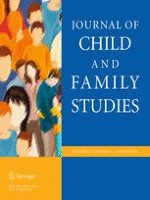01-05-2015 | Original Paper
Resource Workers’ Relationships with Foster Parents
Gepubliceerd in: Journal of Child and Family Studies | Uitgave 1/2016
Log in om toegang te krijgenAbstract
There is little research on the experiences of foster parent resource workers. Resource workers in foster care are the staff members who work most closely with foster parents. Foster parent resource workers in a large metropolitan area were asked the question: “What makes for a good relationship between a resource worker and a foster parent?”. The results were analyzed using concept mapping and resulted in eight concepts. Resource workers needed foster parents to follow through on expectations of their role through licensure and agency guidelines and agreements. They described the need for flexibility in their own role and actions. They focused described the need for common ground with foster parents, have respect for their knowledge and contributions, as well as to provide recognition and thanks. Resource workers needed to be attentive to foster parents, clear about their role and be good communicators. There was a great deal of overlap in the qualities of a good relationship from the perspectives of resource workers in the present study and the perspectives of foster parents as reflected in the existing literature. However, differences that appeared in the literature but not in the present study focused on the importance of resource provision by resource workers to foster parents, and in the results but not the literature focused on the evaluative aspects of resource workers’ role with foster parents.
